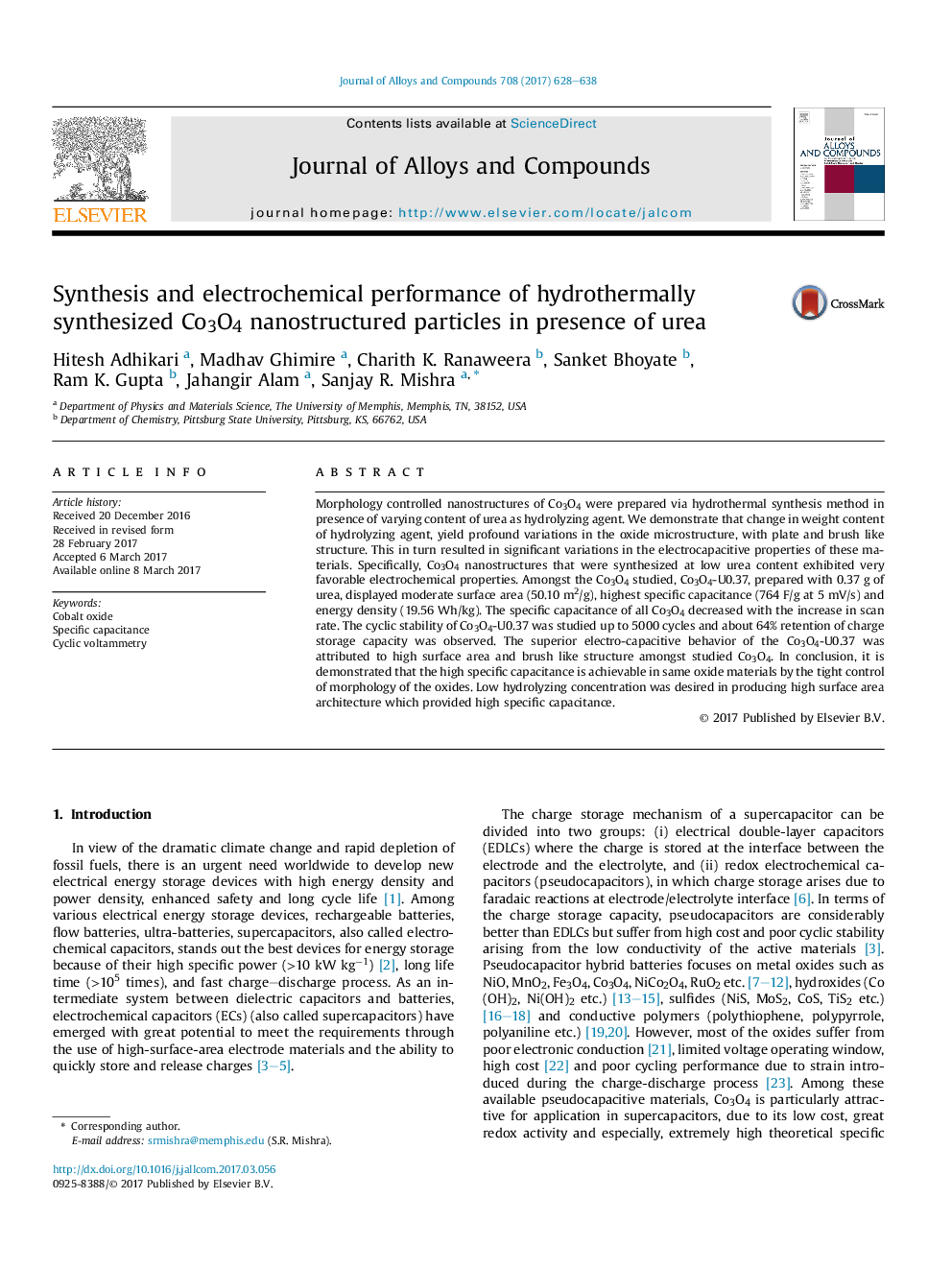| Article ID | Journal | Published Year | Pages | File Type |
|---|---|---|---|---|
| 5459565 | Journal of Alloys and Compounds | 2017 | 11 Pages |
â¢Templet free synthesis of hierarchical oxide structures of Co3O4.â¢Influence of hydrolyzing agent urea on Co3O4 structure.â¢Influence of hydrolyzing agent urea on Co3O4 electrocapacitive behavior.â¢Observed high Sp. Cap â¼764 F/g at 5 mV/s and energy density 19.56 Wh/kg.â¢High surface area and Sp. Cap Co3O4 obtained at low urea content.
Morphology controlled nanostructures of Co3O4 were prepared via hydrothermal synthesis method in presence of varying content of urea as hydrolyzing agent. We demonstrate that change in weight content of hydrolyzing agent, yield profound variations in the oxide microstructure, with plate and brush like structure. This in turn resulted in significant variations in the electrocapacitive properties of these materials. Specifically, Co3O4 nanostructures that were synthesized at low urea content exhibited very favorable electrochemical properties. Amongst the Co3O4 studied, Co3O4-U0.37, prepared with 0.37Â g of urea, displayed moderate surface area (50.10Â m2/g), highest specific capacitance (764Â F/g at 5Â mV/s) and energy density (19.56Â Wh/kg). The specific capacitance of all Co3O4 decreased with the increase in scan rate. The cyclic stability of Co3O4-U0.37 was studied up to 5000 cycles and about 64% retention of charge storage capacity was observed. The superior electro-capacitive behavior of the Co3O4-U0.37 was attributed to high surface area and brush like structure amongst studied Co3O4. In conclusion, it is demonstrated that the high specific capacitance is achievable in same oxide materials by the tight control of morphology of the oxides. Low hydrolyzing concentration was desired in producing high surface area architecture which provided high specific capacitance.
